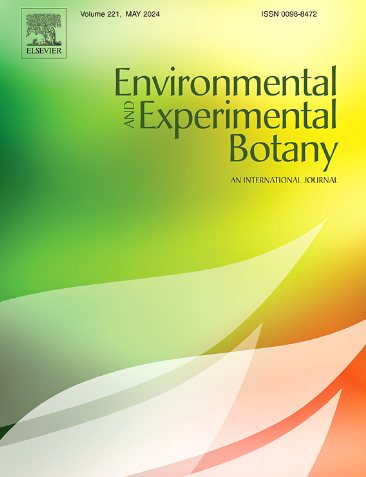Jasmonates signalling plays a key role in modulating berry terpenes accumulation under water deficit conditions in Vitis vinifera L. (cv. Sangiovese)
IF 4.7
2区 生物学
Q2 ENVIRONMENTAL SCIENCES
引用次数: 0
Abstract
Terpenes are among the most important aroma compounds synthesized in grape berries and vine water status affects their accumulation. Although previous studies showed that exogenous hormones applications significantly affected terpenes accumulation, the signalling network involved in regulating their biosynthesis under drought conditions is still unclear. This experiment imposed several deficit irrigation treatments, to elucidate the role of the endogenous hormones signalling network in regulating berry terpenes biosynthesis under water deficit conditions. Berry monoterpenes increased when water deficit was applied during the green or the lag-phase of berry development. Berry abscisic acid and jasmonic acid concentrations were significantly increased by water deficit, regardless of when it was imposed, whereas salicylic acid showed significant differences between irrigation treatments only at veraison. Under water deficit conditions, correlation analyses suggested that jasmonates may be key hormones regulating the biosynthesis of berry monoterpenes, especially in the glycosylated form. Vines subjected to water deficit before veraison showed increased jasmonic acid and methyl jasmonate levels in berries, with the highest monoterpene concentrations measured in the same berries at harvest. These results suggested that endogenous jasmonates may play a key role in water deficit induced signalling that regulates berry monoterpenes biosynthesis.
水分亏缺条件下,茉莉酸盐信号在调节葡萄果实萜类物质积累中起关键作用。桑娇维塞)
萜烯是葡萄果实中合成的最重要的香气化合物之一,葡萄藤水分状况影响其积累。尽管先前的研究表明,外源激素的应用显著影响萜烯的积累,但在干旱条件下调节萜烯生物合成的信号网络仍不清楚。本试验通过不同的亏水灌溉处理,阐明水分亏水条件下内源激素信号网络在调节浆果萜类生物合成中的作用。在浆果发育的绿期或滞后期,水分亏缺使浆果单萜烯含量增加。水分亏缺使浆果脱落酸和茉莉酸浓度显著升高,而水杨酸浓度仅在不同的灌溉处理中有显著差异。在缺水条件下,相关分析表明茉莉酸盐可能是调节浆果单萜合成的关键激素,尤其是糖基化形式的单萜合成。在换季前缺水的葡萄果实中茉莉酸和茉莉酸甲酯含量增加,单萜烯含量在收获时达到最高。这些结果表明,内源茉莉酸可能在水分亏缺诱导的信号传导中发挥关键作用,调控浆果单萜素的生物合成。
本文章由计算机程序翻译,如有差异,请以英文原文为准。
求助全文
约1分钟内获得全文
求助全文
来源期刊

Environmental and Experimental Botany
环境科学-环境科学
CiteScore
9.30
自引率
5.30%
发文量
342
审稿时长
26 days
期刊介绍:
Environmental and Experimental Botany (EEB) publishes research papers on the physical, chemical, biological, molecular mechanisms and processes involved in the responses of plants to their environment.
In addition to research papers, the journal includes review articles. Submission is in agreement with the Editors-in-Chief.
The Journal also publishes special issues which are built by invited guest editors and are related to the main themes of EEB.
The areas covered by the Journal include:
(1) Responses of plants to heavy metals and pollutants
(2) Plant/water interactions (salinity, drought, flooding)
(3) Responses of plants to radiations ranging from UV-B to infrared
(4) Plant/atmosphere relations (ozone, CO2 , temperature)
(5) Global change impacts on plant ecophysiology
(6) Biotic interactions involving environmental factors.
 求助内容:
求助内容: 应助结果提醒方式:
应助结果提醒方式:


